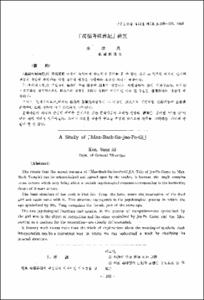자동차용 라디에이터와 응축기 사이의 열적 상호작용에 관한 연구
- Alternative Title
- Analysis of Mutual Thermal Effects between Automotive Radiator and Condenser
- Abstract
- 라디에이터와 응축기는 자동차에서 발생되는 다양한 열을 방출하기이다. 자동차에 있어서 이 둘은 각기 다른 목적으로 사용되고 있지만 매우 가깝게 장착되어 있기 때문에 상호간의 열적인 영향을 무시할 수 없다.
본 연구에서는 양산되고 있는 자동차의 에어컨 시스템과 라디에이터를 이용하여 실험장를 제작하고 실제 자동차가 놓여질 수 있는 상황을 구성하고 실험하여 라디에이터와 응축기 각각의 방열특성과 동시에 작동할 경우의 열적 상호작용에 대하여 검토하였다.
응축기와 라디에이터를 동시에 작동시킨 경우에도 라디에이터의 냉각수 유량 증가나 압축기 회전수 증가에 따라 각각 그 열방출량이 증가한다. 하지만 라디에이터의 경우 단독으로 구동되었을때에 비해 방열율이 크게 감소하며 유량이 증가할수록 그 감소율이 커진다.
또한 응축기의 경우도 응축기 단독으로 구동되어질 때 보다 라디에이터가 구동될 때 응축기 열방출율이 감소하며 이 또한 라디에이터의 냉각수 유량이 증가할수록 그 감소 폭이 커진다.
따라서 응축기와 라디에이터가 동시에 가동될 경우 열적 상호작용에 기인하여 각각의 라디에이터는 입구 공기온도상승에 기인하여 응축기는 열적 상호작용에 기인하여 각각의 열방출율이 감소하며 따라서 성능저하가 초래된다.
Radiator and condenser are important mechanical devices to reduce various kinds of thermal load. In vehicle, those two devices have the respective objectives, but each thermal interaction must be important because those are mounted so closely.
In this study, the experimental apparatus was made by using an air-conditioning system and a radiator of a commercial vehicle, and the experiment was performed under actual situation, and then mutual thermal effect between automotive radiator and condenser was analyzed.
In case of simultaneous operation of radiator and condenser, each heat rejection rate increased by increasing cooling water flow of the radiator and compressor speed. But comparing with the radiator operation only, the heat rejection of radiator decreased more and the decreasing rate grew up by increasing the flow rate, Comparing with the condenser operation only, the heat rejection of the condenser decreased also.
So when the radiator and the condenser were operated simultaneously, the performance of the radiator became worse because of low heat rejection due to the rise of the entrance air temperature of the radiator, and also that of the condenser became worse because of the mutual thermal effect between them.
Radiator and condenser are important mechanical devices to reduce various kinds of thermal load. In vehicle, those two devices have the respective objectives, but each thermal interaction must be important because those are mounted so closely.
In this study, the experimental apparatus was made by using an air-conditioning system and a radiator of a commercial vehicle, and the experiment was performed under actual situation, and then mutual thermal effect between automotive radiator and condenser was analyzed.
In case of simultaneous operation of radiator and condenser, each heat rejection rate increased by increasing cooling water flow of the radiator and compressor speed. But comparing with the radiator operation only, the heat rejection of radiator decreased more and the decreasing rate grew up by increasing the flow rate, Comparing with the condenser operation only, the heat rejection of the condenser decreased also.
So when the radiator and the condenser were operated simultaneously, the performance of the radiator became worse because of low heat rejection due to the rise of the entrance air temperature of the radiator, and also that of the condenser became worse because of the mutual thermal effect between them.
- Issued Date
- 2001
- Type
- Research Laboratory
- Alternative Author(s)
- Kim, Kyungkook; Won, Sungpil
- Publisher
- 공학연구논문집
- Language
- kor
- Rights
- 울산대학교 저작물은 저작권에 의해 보호받습니다.
- Citation Volume
- 32
- Citation Number
- 2
- Citation Start Page
- 63
- Citation End Page
- 74
- Appears in Collections:
- Research Laboratory > Engineering Research
- 파일 목록
-
-
Download
 000002024123.pdf
기타 데이터 / 621.64 kB / Adobe PDF
000002024123.pdf
기타 데이터 / 621.64 kB / Adobe PDF
-
Items in Repository are protected by copyright, with all rights reserved, unless otherwise indicated.